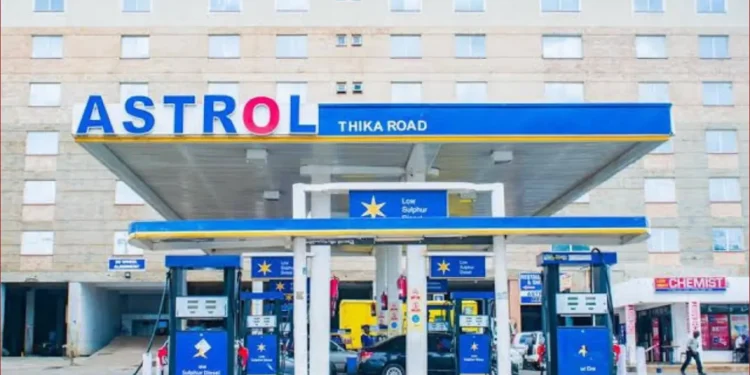- Super petrol, diesel, and kerosene are to remain unchanged for the next 30 days.
- The average landed cost for petroleum products increased, according to the EPRA.
- The global oil prices are projected to decrease in 2025, all through to 2026, due to an oversupply and lower growth in demand.
The Energy & Petroleum Regulatory Authority (EPRA), as usual and in line with the constitution, announced the monthly review for pump prices: super petrol, diesel, and kerosene, which the body says will remain unchanged for the period, effective February 15, 2025, to March 14, 2025.
“In accordance with Section 101(y) of the Petroleum ACT 2019 and Legal Notice No.192 of 2022, we have calculated the maximum retail prices of petroleum products, which will be in force from 15th February 2025 to 14th March 2025.”
“In the period under review, the maximum allowed petroleum pump prices for Super Petrol, Diesel and Kerosene remain unchanged.”
Super petrol, diesel, and kerosene will therefore continue to retail at Kshs.178.58, Kshs.167.068, and Kshs.151.39, respectively, effective the indicated duration.
In Mombasa, super petrol, diesel, and kerosene will retail at Kshs.173.34, Kshs.163.82, and Kshs.148.15 per liter, respectively. Similarly, in Nakuru, the prices of the same will retail at Kshs.175.80, Kshs.166.63, and Kshs.151.01 per liter of super petrol, diesel, and kerosene, respectively.
Additionally, EPRA has indicated that “the average landed cost of imported Super Petrol increased by 2.80% from US$611.69 per cubic meter in December 2024 to US$628.80 per cubic meter in January 2025; Diesel increased by 4.20% from US$671.14 per cubic meter, while Kerosene increased by 4.89% from US$649.64 per cubic meter to US$681.44 per cubic meter over the same period.”
Global Oil Commodity Prices Vis-a-Vis the Kenya’s Pump Prices
On October 29, 2024, the World Bank, in its latest report on the Commodity Markets Outlook, reported that global oil prices could drop to a five-year low in 2025, all the way to 2026, due to an oversupply in the market and weak growth in oil demand.
However, overall prices are expected to remain 30% higher than they were in the five years of the pre-COVID-19 pandemic era, according to the report.
“Global commodity prices are set to tumble to a five-year low in 2025 amid an oil glut that is so large that it is likely to limit the price effects even of a wider conflict in the Middle East. Even so, overall commodity prices will remain 30% higher than they were in the five years before the COVID-19 pandemic.”
“Next year, the global oil supply is expected to exceed demand by an average of 1.2 million barrels per day, a glut that has been exceeded only twice before—during the pandemic-related shutdowns in 2020 and the 1998 oil-price collapse.”
According to the latest (Feb 10, 2025) from the Global Petrol Prices, the average gasoline price around the world is US$1.25, while the average price of diesel is US$1.19 per liter.
Kenya is an oil-importing country, making the prices of petroleum products significantly different from the oil-producing countries. While countries have access to the same prices on international markets, currency fluctuation and taxes are to be blamed on high prices in Kenya, despite the neighboring having slightly lower prices







